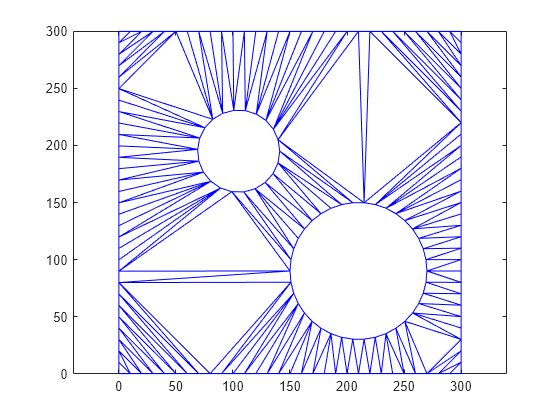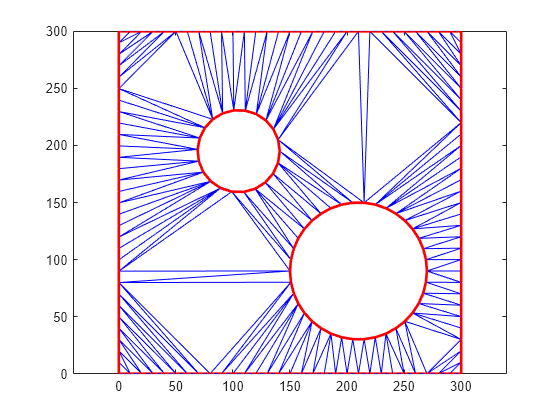TriRep
(不推荐)三角剖分表示
不推荐使用 TriRep。请改用 triangulation。
说明
TriRep 为二维和三维空间中的三角剖分提供拓扑和几何查询。例如,对于三角网格,可以查询连接到顶点的三角形、共享边线的三角形、邻点信息、外心或其他特征。您可以直接使用现有的三角剖分数据创建 TriRep。也可以通过 DelaunayTri(还提供 TriRep 功能的访问权限)创建德劳内三角剖分。
创建对象
描述
输入参量
属性
对象函数
除了以下对象函数之外,TriRep 对象还支持使用括号 () 对三角剖分进行索引。此语法与数组语法相同。
baryToCart | (不推荐)将点坐标从重心坐标转换为笛卡尔坐标 |
cartToBary | (不推荐)将点坐标从笛卡尔坐标转换为重心坐标 |
circumcenters | (不推荐)指定的单纯形的外心 |
edgeAttachments | (不推荐)连接到指定边的三角形或四面体 |
edges | (不推荐)三角剖分边 |
faceNormals | (不推荐)指定的三角形的单位法向量 |
featureEdges | (不推荐)曲面三角剖分的锐边 |
freeBoundary | (不推荐)自由边界面 |
incenters | (不推荐)指定单纯形的内心 |
isEdge | (不推荐)测试顶点是否通过边相连接 |
neighbors | (不推荐)三角形或四面体邻点 |
size | (不推荐)三角剖分矩阵的大小 |
vertexAttachments | (不推荐)连接到顶点的三角形或四面体 |
示例
版本历史记录
在 R2009a 中推出

